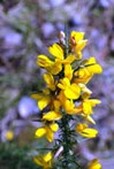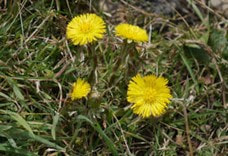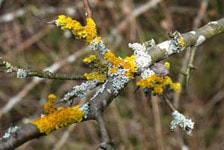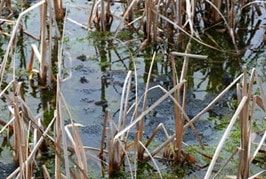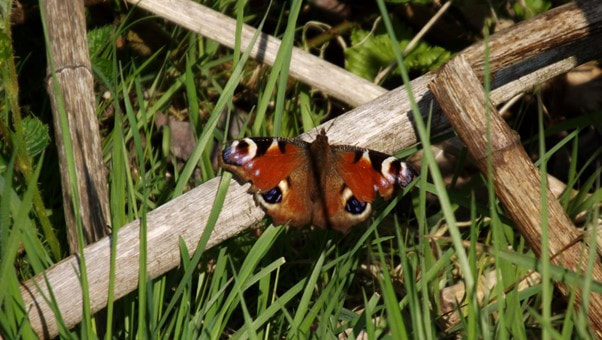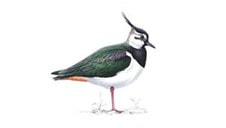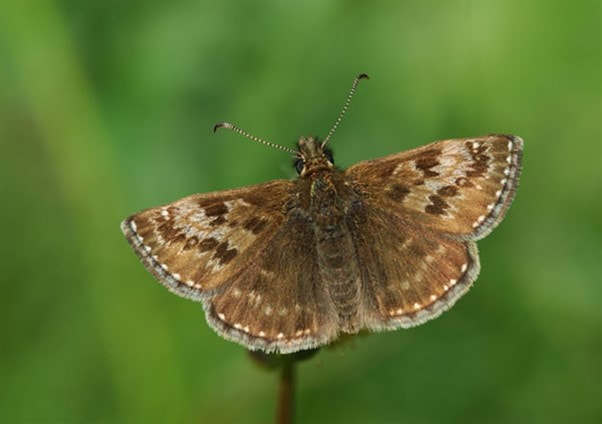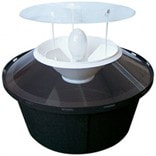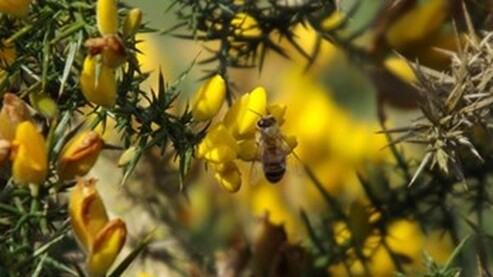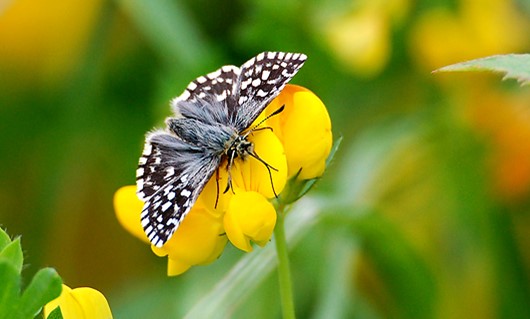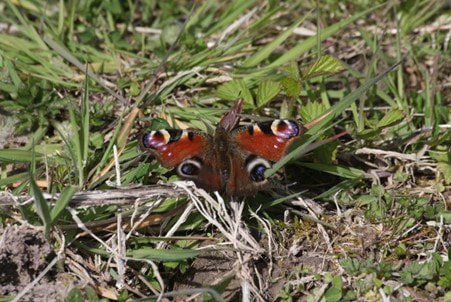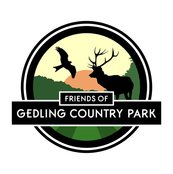Park Watch
Tree Felling
18/1/2020
Whilst surveying the Lower Lagoons before Christmas 2019 it was observed that swans taking off from the water took a route westward and always veered south and then along the route of the future Gedling Access Road (GAR). The change of direction is due to a large willow growing in the flight path at the western end of the west lagoon.
Tree Felling at the Lower Lagoons Volunteers have cut a number of trees and shrubs near the lower lagoons. This has been a reluctant but necessary operation to ease the exit flight path of any Swans or large wildfowl leaving either of the lagoons.
Via have kindly offered to remove the large Willow blocking the main lagoon’s alternative exit route. Observations has shown the current exit flightpath will cut across the new GAR at a low level causing high risk to the birds.
To ameliorate these actions, we will be planting trees along the southern border of the lagoons during 2020.
Many visitors have remarked that the swans regularly approach them and are concerned that they are suffering from a lack of food.
The converse is the case as the pair of swans are regularly fed throughout the winter with a diverse mix of grains recommended as suitable for wildfowl. Please DO NOT feed bread to any of the Park’s wildfowl as it is detrimental to their health.
The construction of the GAR and future traffic will possibly create a serious hazard to swans if they fly this route. We have decided after much discussion, and taking advice from experts, to remove the large Willow to enable the swans to fly directly west and clear any hazards from the GAR. Also some of the Birch and Alder trees alongside the eastern lagoon are posing a hazard during egress by the swans and these will also be trimmed or removed.
Experience has shown that swans appear to be vulnerable during ‘lift off’ and are known to frequently ‘belly flop’ if distracted. New planting will be installed alongside the southern boundary of the lagoons to prevent larger birds flying anywhere near the road in the future.
Tree felling inevitably, and justifiably so, causes an outcry from the public, however we feel the protection of the bird life on the lower lagoons is a priority over the removal of these trees. It will be necessary to complete the operation as soon as possible this winter prior to the nesting season.
The tree felling along the route of the GAR has also caused much outcry and as an environmentalists we can sympathise with those objecting. It is important to note that the GAR has been requested and planned for many years and the agreed route necessitated the removal of these trees. The Friend’s Group have been consulted throughout these operations and have suggested changes to the plans, which have been adopted, for the re-planting of trees and shrubs alongside the GAR. We did request the saving of some larger trees alongside the southern park boundary; however these were diseased and potentially unsafe so had to be removed.
On the up-side 40% more trees will be planted, 11,000 on the stretch along the park’s boundary alongside the lower lagoons, they will all be native species and provide more diversity for wildlife than the removed material.
Built into the road construction plan is protective fencing for Badgers and Amphibians and underpasses for these wildlife species to transverse the road, interestingly they are catered for far better than human visitors to the park!
We have been assured that no road run off will enter our lagoons and the contractors have provided mitigation measures for the removal of Dingy Skipper habitat. Also, as part of the GAR plans Gedling Country Park will increase in area and obtain some interesting new habitat.
Ash Dieback
30/3/2019
As you may have seen recently Ash Dieback (Hymenoscyphus fraxineus) is once again 'in the news' and the following points may be of assistance should any questions be asked.
Many Ash trees within the country park are infected, and have been for the last few years, and we are aware of the problem.
There is NO risk to humans or animals from this infection.
Our policy, as there is no danger to the public from falling limbs etc., is not to fell any trees in the hope that a resistant variety may appear. This follows the generally accepted current best practice.
To the best of our ability, we are always keeping up to date on any threats to wildlife in the country park and will keep the FGCP members and the public fully informed.
It is now illegal to import, plant and to move or sow seeds of the Ash tree.
Should you receive any queries regarding this disease just pass these points on.
You may also add it indicates the reality of us adopting, from our formation, the policy of only allowing native species of known provenance being planted in the country park. However, this is not the policy of Gedling Borough Council, and as a result we constantly keep up pressure on them to adopt and conform.
Summer 2018 Wildlife Walks
28/7/2018
The Friends held multiple summer wildlife walks within Gedling Country Park each with slightly different themes:
Friday 06 April - Dawn Chorus Walk at 6.00am
Yes, you read that right - 6.00am! The Friends of Gedling Country Park went for a walk at dawn in the park. The group sighted 29 different birds listed below:
Song Thrush, Great Tit, Blackbird, Pheasant, Dunnock, Wren, Robin, Wood Pigeon, Crow, Tawny Owl, Pied Wagtail, Skylark, Magpie, Kestrel, Chiff Chaff, Blue Tit, Collared Dove, Chaffinch, Green Woodpecker, Bullfinch, Coot, Moorhen, Reed Bunting, Common Buzzard, Meadow Pipit, Goldfinch, Greenfinch, Jay, Linnet.
Tuesday 22 May
We looked for: Dingy Skipper and Green Hairstreak Butterflies, in addition to the usual Peacocks, Red Admirals, Small Tortoiseshells, Commas, Green-veined Whites etc. By the ponds (rare sights) Hairy Dragonflies and the Little Egret. We tried to spot (or hear) grasshopper, willow reed and garden warblers, whitethroats, lesser whitethroats and chiffchaffs. A cuckoo passing through. Miner and other bees. Spring wildflowers.
A report of the first two walks including photos can be downloaded here:
first_two_walks_29.5.18.pdf
Download File
Monday 04 June
We looked for Orchids - Southern and Northern Marsh, Bee and Pyramidal Orchids. More butterflies - Small Copper, Holly and Common Blues, Brown Argus. Hundreds of moths. Heron on the ponds.
Friday 29 June
Our target was to find 15 species of butterflies, including the Ringlet (270 spotted by Mark in 2017 - did we beat that?) On the lower ponds, dragonflies and damselflies. Top reed pond coots, moorhens, reed buntings and warblers.
We also had a 'goodie bag' of the following items donated to us to celebrate National Insect Week (18-24 June 2018):
Introduction to Insect Science; wrist bands; keyrings; pens; pencils; magnifying card; wildflower seed packets; Post It notes; Mini Guides to: garden pond insects; farmland insects; garden butterflies; British ladybirds; garden bees
A report of the walks on 04 and 29 June including photos can be downloaded here:
4th_and_29th_june_walks_report.pdf
Download File
Friday 27 July
We looked for mainly wildflowers, darter dragonflies, damselflies, hoverflies and other insects - the busiest time for these. Possibly the kingfisher on the ponds. Wild strawberries.
Friday 10 August
The last walk of the year covered the western side of the Park, leaving the main path to explore what’s hidden in the grasses - Common Blue butterflies with many hoverflies supplementing the bees in pollination efforts.
A report of the final two walks on 27 July and 10 August including photos can be downloaded here:
27th_july_and_10th_august_2018_walks_report.pdf
Download File
18/1/2020
Whilst surveying the Lower Lagoons before Christmas 2019 it was observed that swans taking off from the water took a route westward and always veered south and then along the route of the future Gedling Access Road (GAR). The change of direction is due to a large willow growing in the flight path at the western end of the west lagoon.
Tree Felling at the Lower Lagoons Volunteers have cut a number of trees and shrubs near the lower lagoons. This has been a reluctant but necessary operation to ease the exit flight path of any Swans or large wildfowl leaving either of the lagoons.
Via have kindly offered to remove the large Willow blocking the main lagoon’s alternative exit route. Observations has shown the current exit flightpath will cut across the new GAR at a low level causing high risk to the birds.
To ameliorate these actions, we will be planting trees along the southern border of the lagoons during 2020.
Many visitors have remarked that the swans regularly approach them and are concerned that they are suffering from a lack of food.
The converse is the case as the pair of swans are regularly fed throughout the winter with a diverse mix of grains recommended as suitable for wildfowl. Please DO NOT feed bread to any of the Park’s wildfowl as it is detrimental to their health.
The construction of the GAR and future traffic will possibly create a serious hazard to swans if they fly this route. We have decided after much discussion, and taking advice from experts, to remove the large Willow to enable the swans to fly directly west and clear any hazards from the GAR. Also some of the Birch and Alder trees alongside the eastern lagoon are posing a hazard during egress by the swans and these will also be trimmed or removed.
Experience has shown that swans appear to be vulnerable during ‘lift off’ and are known to frequently ‘belly flop’ if distracted. New planting will be installed alongside the southern boundary of the lagoons to prevent larger birds flying anywhere near the road in the future.
Tree felling inevitably, and justifiably so, causes an outcry from the public, however we feel the protection of the bird life on the lower lagoons is a priority over the removal of these trees. It will be necessary to complete the operation as soon as possible this winter prior to the nesting season.
The tree felling along the route of the GAR has also caused much outcry and as an environmentalists we can sympathise with those objecting. It is important to note that the GAR has been requested and planned for many years and the agreed route necessitated the removal of these trees. The Friend’s Group have been consulted throughout these operations and have suggested changes to the plans, which have been adopted, for the re-planting of trees and shrubs alongside the GAR. We did request the saving of some larger trees alongside the southern park boundary; however these were diseased and potentially unsafe so had to be removed.
On the up-side 40% more trees will be planted, 11,000 on the stretch along the park’s boundary alongside the lower lagoons, they will all be native species and provide more diversity for wildlife than the removed material.
Built into the road construction plan is protective fencing for Badgers and Amphibians and underpasses for these wildlife species to transverse the road, interestingly they are catered for far better than human visitors to the park!
We have been assured that no road run off will enter our lagoons and the contractors have provided mitigation measures for the removal of Dingy Skipper habitat. Also, as part of the GAR plans Gedling Country Park will increase in area and obtain some interesting new habitat.
Ash Dieback
30/3/2019
As you may have seen recently Ash Dieback (Hymenoscyphus fraxineus) is once again 'in the news' and the following points may be of assistance should any questions be asked.
Many Ash trees within the country park are infected, and have been for the last few years, and we are aware of the problem.
There is NO risk to humans or animals from this infection.
Our policy, as there is no danger to the public from falling limbs etc., is not to fell any trees in the hope that a resistant variety may appear. This follows the generally accepted current best practice.
To the best of our ability, we are always keeping up to date on any threats to wildlife in the country park and will keep the FGCP members and the public fully informed.
It is now illegal to import, plant and to move or sow seeds of the Ash tree.
Should you receive any queries regarding this disease just pass these points on.
You may also add it indicates the reality of us adopting, from our formation, the policy of only allowing native species of known provenance being planted in the country park. However, this is not the policy of Gedling Borough Council, and as a result we constantly keep up pressure on them to adopt and conform.
Summer 2018 Wildlife Walks
28/7/2018
The Friends held multiple summer wildlife walks within Gedling Country Park each with slightly different themes:
Friday 06 April - Dawn Chorus Walk at 6.00am
Yes, you read that right - 6.00am! The Friends of Gedling Country Park went for a walk at dawn in the park. The group sighted 29 different birds listed below:
Song Thrush, Great Tit, Blackbird, Pheasant, Dunnock, Wren, Robin, Wood Pigeon, Crow, Tawny Owl, Pied Wagtail, Skylark, Magpie, Kestrel, Chiff Chaff, Blue Tit, Collared Dove, Chaffinch, Green Woodpecker, Bullfinch, Coot, Moorhen, Reed Bunting, Common Buzzard, Meadow Pipit, Goldfinch, Greenfinch, Jay, Linnet.
Tuesday 22 May
We looked for: Dingy Skipper and Green Hairstreak Butterflies, in addition to the usual Peacocks, Red Admirals, Small Tortoiseshells, Commas, Green-veined Whites etc. By the ponds (rare sights) Hairy Dragonflies and the Little Egret. We tried to spot (or hear) grasshopper, willow reed and garden warblers, whitethroats, lesser whitethroats and chiffchaffs. A cuckoo passing through. Miner and other bees. Spring wildflowers.
A report of the first two walks including photos can be downloaded here:
first_two_walks_29.5.18.pdf
Download File
Monday 04 June
We looked for Orchids - Southern and Northern Marsh, Bee and Pyramidal Orchids. More butterflies - Small Copper, Holly and Common Blues, Brown Argus. Hundreds of moths. Heron on the ponds.
Friday 29 June
Our target was to find 15 species of butterflies, including the Ringlet (270 spotted by Mark in 2017 - did we beat that?) On the lower ponds, dragonflies and damselflies. Top reed pond coots, moorhens, reed buntings and warblers.
We also had a 'goodie bag' of the following items donated to us to celebrate National Insect Week (18-24 June 2018):
Introduction to Insect Science; wrist bands; keyrings; pens; pencils; magnifying card; wildflower seed packets; Post It notes; Mini Guides to: garden pond insects; farmland insects; garden butterflies; British ladybirds; garden bees
A report of the walks on 04 and 29 June including photos can be downloaded here:
4th_and_29th_june_walks_report.pdf
Download File
Friday 27 July
We looked for mainly wildflowers, darter dragonflies, damselflies, hoverflies and other insects - the busiest time for these. Possibly the kingfisher on the ponds. Wild strawberries.
Friday 10 August
The last walk of the year covered the western side of the Park, leaving the main path to explore what’s hidden in the grasses - Common Blue butterflies with many hoverflies supplementing the bees in pollination efforts.
A report of the final two walks on 27 July and 10 August including photos can be downloaded here:
27th_july_and_10th_august_2018_walks_report.pdf
Download File
Wildlife update for March 2018
Spring has now sprung with a vengeance within the country park so take a visit and a wander around to view the wonderful wildlife and scenery
Wildflowers
|
Gorse is now flowering well throughout the park. This plant manages to bear flowers throughout the year, it has been recorded in flower during every month, but is at it’s best during early spring. Smaller bird life regularly nest in Gorse shrubs as it can provide shelter and protection due to the spiky branches. Look out for pollinating insects visiting the shrub as the flowers explode showering the pollinator with pollen, an active means to assist pollination.
|
Coltsfoot is now in full flower throughout the damp areas, though this spring this habitat applies to almost all of the park as it is fully saturated everywhere! A brilliant small yellow solitary flower born on erect purplish scaled stems it provides an early pollen source for bees and other insects. Watch for the distinct ‘clocks’ of the seed heads later and the round heart-shaped leaves as they appear after the flowers. This plant was formally used in herbal remedies to treat coughs and asthma. |
Lesser Celandine found throughout the woodland edges a rosette of shiny bright green, fleshy, heart shaped leaves with a group of bright glistening yellow flowers. This plant can happily grow in seasonally flooded habitats so should survive well this year.
|
General – look out for the first Hawthorn and Wild-rose leaves appearing this month they are already out in surrounding more sheltered local habitats. Whilst walking around the site enjoy the Lichens, a much neglected group, consisting of a fungus growing in close association (symbiosis) with an alga, a complex process especially the reproductive methods.
|
|
Amphibians
|
Insects
|
The Common Frog chorus is in full swing at the lower lagoons with masses of spawn already present, hopefully the upper lagoons will follow shortly.
Please be extremely careful around the lagoons, especially if children present, as we have had a great deal of rainfall this spring and the water levels are high and the banks very slippery. Keep a look out for Herons and Egrets as they will be building up breeding reserves by feeding on the Frogs and the ducks will also be devouring the spawn. |
|
Butterflies should be appearing very soon, though this is very temperature dependent, look out for the early ones which have hibernated over the winter – Brimstone, Small Tortoiseshell, Peacock and Red Admiral.
We will be commencing the butterfly surveys in the first week of April and if you would like to assist please contact us. It is an important part of the park management to record species for comparative purposes and as indicators of the state of the habitats. No experience is required just enthusiasm! |
|
Birds
Good news the Lapwings are back on the park and hopefully will nest again within the Solar Farm, they are shy birds, easily disturbed and this site really does protect them from dogs etc. Four Buzzards have been recorded flying around during the last few days as well as Skylarks singing. Our Long-tailed Tits appear to have separated from their flocks and are pairing up for nesting. Robins, Blackbirds and Song Thrush are all claiming territories throughout. |
Mammals
|
Rabbits are still present in numbers throughout though not so easily observed at this time. Brown Hare has been recorded in the central grassland, though unfortunately it was being chased by a uncontrolled dog, This will really inhibit any breeding by this species in the park!
This is an ideal time to observe animal/bird tracks trails and signs look for Badger, Fox, Brown Hare, Heron, Coot, Moorhen, Ducks, Muntjac and Roe Deer, Rabbits as well as Mice and Voles. |
Guide books for identification are quite cheap and/or the local libraries stock them. It’s good fun for both children and adults detecting and identifying the tracks though be aware of the conditions during this very wet spring.
Remember this is your park and used by many various interested parties so please treat it with respect also we would be grateful if you contact us with any observations you have made.
ENJOY!
Remember this is your park and used by many various interested parties so please treat it with respect also we would be grateful if you contact us with any observations you have made.
ENJOY!
Dingy Skipper - Volunteers Project for 2017
26/3/2018
11/2/2017
- Dingy Skipper photo courtesy of the Butterfly Conservation web site (http://butterfly-conservation.org/50-1101/dingy-skipper.html).
- The Dingy Skipper -Erynnis tages on Gedling Country Park
- A Volunteers Project for 2017
- The Dingy Skipper Butterfly is registered as a ‘species of principle importance for conservation in England’ under section 41 of the NERC Act (2006). It is also listed as a species of conservation concern under Nottinghamshire’s Local Biodiversity Action Plan (LBAP) a Priority Species in the UK Biodiversity Action Plan status and of high priority in Butterfly conservation.
- The Dingy Skipper – Erynnis tages It is not particularly easy to observe this moth-like butterfly it being dark greyish-brown with grey bands on the forewings and a series of small pale dots on the outer margins of both wings and it is extremely well camouflaged on the bare ground. It habitats warm meadow areas with plenty of bare earth and/ or patches of limestone. It spends long basking on soil or stones resting with wings fully open. In bright sunshine it is flighty and difficult to approach. In dull weather and at night it perches on dead flowerheads in a moth-like fashion. It may be confused with the Mother Shipton moth-Callistege mi and the Burnet Companion moth-Euclidia glyphica both occurring in the park and also with the Grizzed Skipper-Pyrgus malvae not recorded in the park. It is a very territorial species and males can often be observed defending their territories from rival suitors.
- Whilst widespread and common throughout most of Europe, the species has been in decline in many of the countries in the northern range of its distribution including the British Isles and is becoming increasingly rare There is one generation in England, from late April to Mid-June. Common Bird’s-foot-trefoil-Lotus corniculatus is the usual foodplant in all habitats. Horseshoe Vetch-Hippocrepis comosa is also used on calcareous soils, and Greater Bird’s-foot-trefoil-Lotus pedunculatus is used on heavier soils.
- We are lucky to have a small, but thriving, population of this butterfly within the Gedling Country Park and there is also a further population within the area set aside for the Gedling Access Road (GAR). In agreement and support of Gedling Borough Council we, the Friends Group, are working with the Environmental Consortium for the GAR constructors to create further suitable habitats for the Dingy Skipper within Gedling Country Park, to monitor and to translocate the GAR population back into the park.
- On Wednesday 08 February 2017 a group of nine volunteers commenced clearing scrub growth from a bank near the lower lagoons, this being considered one of a number of potential suitable sites for colonisation or translocation to occur. We removed a considerable amount of invasive scrub and cleared an area with limestone chippings and bare earth. Further work will take place over the next few weeks in another four sites with the hope they will provide suitable areas for the butterflies.
- During the Summer period volunteers will search for eggs and caterpillars and move them from the areas where the GAR will be constructed into suitable habitats within GCP. This is not difficult work but can be very laborious, caterpillars can only be found feeding at night! It has also been agreed that suitable soil and plants can be moved from the GAR site into the park. Should you be interested in this or any other volunteer opportunities at Gedling Country Park please have a look at our Events Calendar.
- You can find out more about the Dingy Skipper through the Butterfly Conservation website by clicking on this link http://butterfly-conservation.org/50-1101/dingy-skipper.html
- Yours,
- Brian Osborne, FGCP Trustee and Wildlife Specialist
Summer 2016 Update
20/8/2016
Phew! We've been very busy this spring and summer making extensive improvements in the park.
Here's a summary of our activities:
Butterfly/Dragonfly surveys all up to date.
Moth recording recommenced and working well - now will be one every two weeks period until October then once a month.
Bees now working very well - we should have honey by September.
The top loading demo hive is now occupied and working well.
Our new Robinson Moth Trap, used for recording of all of the different species of moths found in the park.
.Contracts are soon to be signed to allow grazing in selected areas in the park - as soon as we clear the Ragwort in those areas, the animals should be on site.
As an interesting note the last moth trapping resulted in seven species of environmental concern by the County Recorder. The Dragonfly survey has also resulted in two species of concern
Yours,
Brian Osborne, FGCP Trustee and Wildlife Specialist
PS. A myriad of insects flying in the park as well as the greatest number of Green Woodpeckers I have ever seen - get up there, sit down in the grassland,relax, look and listen - no monies can buy this experience as It's all free on the park!
Here's a summary of our activities:
Butterfly/Dragonfly surveys all up to date.
Moth recording recommenced and working well - now will be one every two weeks period until October then once a month.
Bees now working very well - we should have honey by September.
The top loading demo hive is now occupied and working well.
Our new Robinson Moth Trap, used for recording of all of the different species of moths found in the park.
.Contracts are soon to be signed to allow grazing in selected areas in the park - as soon as we clear the Ragwort in those areas, the animals should be on site.
As an interesting note the last moth trapping resulted in seven species of environmental concern by the County Recorder. The Dragonfly survey has also resulted in two species of concern
Yours,
Brian Osborne, FGCP Trustee and Wildlife Specialist
PS. A myriad of insects flying in the park as well as the greatest number of Green Woodpeckers I have ever seen - get up there, sit down in the grassland,relax, look and listen - no monies can buy this experience as It's all free on the park!
A September sunny walk
27/9/2015
The butterfly walk was showing many species of insects including:-
Common Blue - few males still flying throughout the walk
Speckled Wood - pristine examples flying the Spring Lane hedgerow
Small Copper - just one feeding on Ragwort
Small White - all females
Small Heath - flying throughout the walk
White Tailed Bumblebee and Common Carder Bee - feeding continuously, probably new queens stocking up on reserves for overwinter hibernation
Grasshopper - in profusion in the grass
Honey Bees - stocking up on pollen and nectar
Craneflies - these are now at peak hatching and at least three species were flying, though I was not able to identify which ones (there are approx 300 species in UK)
Regarding the honey bees, our six hives are now occupied and we will soon be placing two within the solar farm. The remainder will follow next spring.
At present the bees are resident nearby and have produced a small quantity of honey which we will be offering for sale on our open day on Saturday 14th November at Mapperley Social Club.
Our honey is just extracted from the comb, strained, settled for 48 hours and then poured into jars so you have a natural product with little if any nutrition and flavours removed. No filtration is involved, as occurs in many commercial products, which removes health giving pollen and flavours.
We will be moth trapping during October (weather permitting) so look to our website for the results.
We have been given grants for 500+ native trees for boundary planting, shrubs for wildlife and wild flower seeds for insects. Volunteers are urgently required this winter for planting these.
Please contact us if you can provide some help however small.
Dog fouling is still prominent within the park.
Please report any offenders to Gedling Borough Council or to our website as it is both unpleasant, unhealthy and detrimental to the park's flora and fauna. It is totally irresponsibility by some dog's owners, and due to the many complaints received action will have to be taken. This will unfortunately affect all responsible dog owners as well as the offenders.
Common Blue - few males still flying throughout the walk
Speckled Wood - pristine examples flying the Spring Lane hedgerow
Small Copper - just one feeding on Ragwort
Small White - all females
Small Heath - flying throughout the walk
White Tailed Bumblebee and Common Carder Bee - feeding continuously, probably new queens stocking up on reserves for overwinter hibernation
Grasshopper - in profusion in the grass
Honey Bees - stocking up on pollen and nectar
Craneflies - these are now at peak hatching and at least three species were flying, though I was not able to identify which ones (there are approx 300 species in UK)
Regarding the honey bees, our six hives are now occupied and we will soon be placing two within the solar farm. The remainder will follow next spring.
At present the bees are resident nearby and have produced a small quantity of honey which we will be offering for sale on our open day on Saturday 14th November at Mapperley Social Club.
Our honey is just extracted from the comb, strained, settled for 48 hours and then poured into jars so you have a natural product with little if any nutrition and flavours removed. No filtration is involved, as occurs in many commercial products, which removes health giving pollen and flavours.
We will be moth trapping during October (weather permitting) so look to our website for the results.
We have been given grants for 500+ native trees for boundary planting, shrubs for wildlife and wild flower seeds for insects. Volunteers are urgently required this winter for planting these.
Please contact us if you can provide some help however small.
Dog fouling is still prominent within the park.
Please report any offenders to Gedling Borough Council or to our website as it is both unpleasant, unhealthy and detrimental to the park's flora and fauna. It is totally irresponsibility by some dog's owners, and due to the many complaints received action will have to be taken. This will unfortunately affect all responsible dog owners as well as the offenders.
Butterfly Conservation in the Park
28/5/2015
On Wednesday last week Charlotte Harris and Brian Osborne, the Trustees’ Conservation representatives, hosted a visit by Bill Bacon and Richard Rogers from the East Midlands Branch of Butterfly Conservation.
We walked the site especially concentrating on our proposed location for a Butterfly Walk. There was a consensus on the suitability of our proposed route and we are now in discussions with Gedling Borough Council to implement this walk as soon as possible. We hope that this will provide some volunteering opportunities for interested Friends.
Both Bill and Richard were impressed by the scope of the site for butterflies and other insect life and identified suitable areas for improvement. These suggestions will feed into the conservation work, which is being planned for late autumn and should present further volunteering opportunities.
Throughout our walk we identified the most suitable habitats for the Dingy Skipper and Grizzled Skipper - and we will indicate these for the Friends on the web site shortly, and hopefully you can assist us in monitoring these and other areas during the summer. Advice was also provided on suitable locations for supplementary planting of food plants and areas for woodland improvement.
You can find out more about the Dingy Skipper and Grizzled Skipper through the Butterfly Conservation website by clicking on this link http://butterfly-conservation.org/50-1101/dingy-skipper.html
We are delighted to announce that Bill has agreed to make a guest appearance at our Members Meeting on 6 June to give a short talk to us all (for more information about this Members Meeting, please see our Events Calendar).
Bill also sent the following mail after his visit:-
'I was delighted to meet you and Charlotte yesterday, and many thanks for the guided tour. I am most impressed with your approach and feel very relieved regarding your plans, and as I understand it 'The Friends' as a whole, interest in maintaining the biodiversity of Gedling Park. I feel much relieved by your approach.'
This is good news for the Friends as it shows that we are proceeding in the right direction.
Altogether it was a successful and constructive visit and our thanks and appreciation to Bill and Richard for their time.
Yours,
Brian Osborne, FGCP Trustee and Wildlife Specialist.
We walked the site especially concentrating on our proposed location for a Butterfly Walk. There was a consensus on the suitability of our proposed route and we are now in discussions with Gedling Borough Council to implement this walk as soon as possible. We hope that this will provide some volunteering opportunities for interested Friends.
Both Bill and Richard were impressed by the scope of the site for butterflies and other insect life and identified suitable areas for improvement. These suggestions will feed into the conservation work, which is being planned for late autumn and should present further volunteering opportunities.
Throughout our walk we identified the most suitable habitats for the Dingy Skipper and Grizzled Skipper - and we will indicate these for the Friends on the web site shortly, and hopefully you can assist us in monitoring these and other areas during the summer. Advice was also provided on suitable locations for supplementary planting of food plants and areas for woodland improvement.
You can find out more about the Dingy Skipper and Grizzled Skipper through the Butterfly Conservation website by clicking on this link http://butterfly-conservation.org/50-1101/dingy-skipper.html
We are delighted to announce that Bill has agreed to make a guest appearance at our Members Meeting on 6 June to give a short talk to us all (for more information about this Members Meeting, please see our Events Calendar).
Bill also sent the following mail after his visit:-
'I was delighted to meet you and Charlotte yesterday, and many thanks for the guided tour. I am most impressed with your approach and feel very relieved regarding your plans, and as I understand it 'The Friends' as a whole, interest in maintaining the biodiversity of Gedling Park. I feel much relieved by your approach.'
This is good news for the Friends as it shows that we are proceeding in the right direction.
Altogether it was a successful and constructive visit and our thanks and appreciation to Bill and Richard for their time.
Yours,
Brian Osborne, FGCP Trustee and Wildlife Specialist.
26/4/2015
We are off for a wander to see what's about, there was light cloud cover, moderate wind and it was about 7 degrees Celsius.
From the Lambley Lane car park we took a stroll to the lagoons. We saw a Coot which was probably nesting and a very territorial and Little Grebe, which was feeding. From the lagoons we wandered up the eastern pathway around the solar farm. The trees are now bursting to their full potential. There are numerous Skylarks singing their morning chorus (probably one of the most beautiful sounds of the English countryside, especially on a clear peaceful Sunday morning). We observed a magnificent Song Thrush feeding close to the solar farm fencing, a species which is sadly now in decline.
The cable trenches (coming from the solar farm passing alongside the pathway and veering east to Lambley Lane) are now covered over and trees have been replanted and are growing. We noticed that the scrapes to the left of the path are very dry and will require some remedial work this Autumn.
We saw a Dog Fox slinking away around the northern edge of the solar farm, he looked in excellent condition. There was a Cuckoo calling away to the NW. My first of the season! We turned left and down the central path to the Lagoon, one Lapwing on the hillside, then diagonally along the south west pathway around to the southern perimeter of the park. There was a profusion of Cowslips flowering just over the park boundary and thankfully spreading into our area. There were also masses of Wild Strawberries flowering.
From there we walked on to the mainly dried up flash to the west where we could find no sign of the Southern Marsh Orchids that grow in this area. There were plenty of Rabbits around the banks grazing and also plenty of Violets in bloom. There was bird life a plenty on the grasslands in this area of the park: Skylarks, Meadow Pipits, Whitethroats amongst others - all singing and probably nesting.
Another Cuckoo calling to the west!
Back around the pathway to the central lagoon and then a stroll to the two southern lagoons. We saw some super clumps of King Cups flowering in the western of the two Lagoons.
Now, it's ten o'clock and time for a coffee.
It was a wonderful and inspiring walk for a Sunday (or any for that matter any) morning.
There were just a few downsides: dog poo still left around the pathways (in bags in some cases), dogs under no control whatsoever in the lagoons and over the nesting areas.
If we are to leave this very valuable environment to future generations more care and responsibility needs to be taken regarding these issues.
I would like to say a big thanks to FGCP member Mark Tyler for his enthusiasm, for acting as my guide for the morning and for the bird identification.
We saw or heard a total of 40 species of birds during the walk these are listed below.
I would like to encourage you all to keep a full record of all your finds on the park - bird, butterflies, dragonflies, moths, other insects, flowers, fungi, trees, lichens and anything unusual. We will need them for a record of the park – we have produced a short guide to recording wildlife in the park which you can access by clicking on this link http://www.gedlingcountrypark.org.uk/recording-wildlife.html
Have a good week and a great Bank Holiday!
Yours, Brian Osborne, nature watcher and Friends of Gedling Country Park Trustee.
Little Grebe Tachybaptus ruficollis
Mallard Anas platyrhynchos
Common Buzzard Buteo buteo
Pheasant Phasianus colchicus
Moorhen Gallinula chloropus
Coot Fulica atra
Lapwing Vanellus vanellus
Stock Dove Columba oenas
Collard Dove Streptopelia decaocto
Woodpigeon Columba palumbus
Cuckoo Cuculus canorus
Green Woodpecker Picus viridis
Skylark Alauda arvensis
Swallow Hirundo rustica
Meadow Pipit Anthus pratensis
Pied Wagtail Motacilla alba
Wren Troglodytes troglodytes
Dunnock Prunella modularis
Robin Erithracus rubecula
Blackbird Turdus merula
Song Thrush Turdus philomelos
Whitethroat Sylvia communis
Blackcap Sylvia atricapilla
Chiffchaff Phylloscopus collybita
Willow Warbler Phylloscopus trochilus
Goldcrest Regulus regulus
Chaffinch Fringilla coelebs
Blue Tit Parus caeruleus
Great Tit Parus major
Magpie Pica pica
Jackdaw Corvus monedula
Rook Corvus frugilegus
Carrion Crow Corvus corone
Long-tailed Tit Aegithalos caudatus
Greenfinch Carduelis chloris
Goldfinch Carduelis carduelis
Linnet Carduelis cannabina
Bullfinch Pyrrhula pyrrhula
Reed Bunting Emberiza schoeniclus
Greater Spotted Woodpecker Dendrocopos major
From the Lambley Lane car park we took a stroll to the lagoons. We saw a Coot which was probably nesting and a very territorial and Little Grebe, which was feeding. From the lagoons we wandered up the eastern pathway around the solar farm. The trees are now bursting to their full potential. There are numerous Skylarks singing their morning chorus (probably one of the most beautiful sounds of the English countryside, especially on a clear peaceful Sunday morning). We observed a magnificent Song Thrush feeding close to the solar farm fencing, a species which is sadly now in decline.
The cable trenches (coming from the solar farm passing alongside the pathway and veering east to Lambley Lane) are now covered over and trees have been replanted and are growing. We noticed that the scrapes to the left of the path are very dry and will require some remedial work this Autumn.
We saw a Dog Fox slinking away around the northern edge of the solar farm, he looked in excellent condition. There was a Cuckoo calling away to the NW. My first of the season! We turned left and down the central path to the Lagoon, one Lapwing on the hillside, then diagonally along the south west pathway around to the southern perimeter of the park. There was a profusion of Cowslips flowering just over the park boundary and thankfully spreading into our area. There were also masses of Wild Strawberries flowering.
From there we walked on to the mainly dried up flash to the west where we could find no sign of the Southern Marsh Orchids that grow in this area. There were plenty of Rabbits around the banks grazing and also plenty of Violets in bloom. There was bird life a plenty on the grasslands in this area of the park: Skylarks, Meadow Pipits, Whitethroats amongst others - all singing and probably nesting.
Another Cuckoo calling to the west!
Back around the pathway to the central lagoon and then a stroll to the two southern lagoons. We saw some super clumps of King Cups flowering in the western of the two Lagoons.
Now, it's ten o'clock and time for a coffee.
It was a wonderful and inspiring walk for a Sunday (or any for that matter any) morning.
There were just a few downsides: dog poo still left around the pathways (in bags in some cases), dogs under no control whatsoever in the lagoons and over the nesting areas.
If we are to leave this very valuable environment to future generations more care and responsibility needs to be taken regarding these issues.
I would like to say a big thanks to FGCP member Mark Tyler for his enthusiasm, for acting as my guide for the morning and for the bird identification.
We saw or heard a total of 40 species of birds during the walk these are listed below.
I would like to encourage you all to keep a full record of all your finds on the park - bird, butterflies, dragonflies, moths, other insects, flowers, fungi, trees, lichens and anything unusual. We will need them for a record of the park – we have produced a short guide to recording wildlife in the park which you can access by clicking on this link http://www.gedlingcountrypark.org.uk/recording-wildlife.html
Have a good week and a great Bank Holiday!
Yours, Brian Osborne, nature watcher and Friends of Gedling Country Park Trustee.
Little Grebe Tachybaptus ruficollis
Mallard Anas platyrhynchos
Common Buzzard Buteo buteo
Pheasant Phasianus colchicus
Moorhen Gallinula chloropus
Coot Fulica atra
Lapwing Vanellus vanellus
Stock Dove Columba oenas
Collard Dove Streptopelia decaocto
Woodpigeon Columba palumbus
Cuckoo Cuculus canorus
Green Woodpecker Picus viridis
Skylark Alauda arvensis
Swallow Hirundo rustica
Meadow Pipit Anthus pratensis
Pied Wagtail Motacilla alba
Wren Troglodytes troglodytes
Dunnock Prunella modularis
Robin Erithracus rubecula
Blackbird Turdus merula
Song Thrush Turdus philomelos
Whitethroat Sylvia communis
Blackcap Sylvia atricapilla
Chiffchaff Phylloscopus collybita
Willow Warbler Phylloscopus trochilus
Goldcrest Regulus regulus
Chaffinch Fringilla coelebs
Blue Tit Parus caeruleus
Great Tit Parus major
Magpie Pica pica
Jackdaw Corvus monedula
Rook Corvus frugilegus
Carrion Crow Corvus corone
Long-tailed Tit Aegithalos caudatus
Greenfinch Carduelis chloris
Goldfinch Carduelis carduelis
Linnet Carduelis cannabina
Bullfinch Pyrrhula pyrrhula
Reed Bunting Emberiza schoeniclus
Greater Spotted Woodpecker Dendrocopos major

